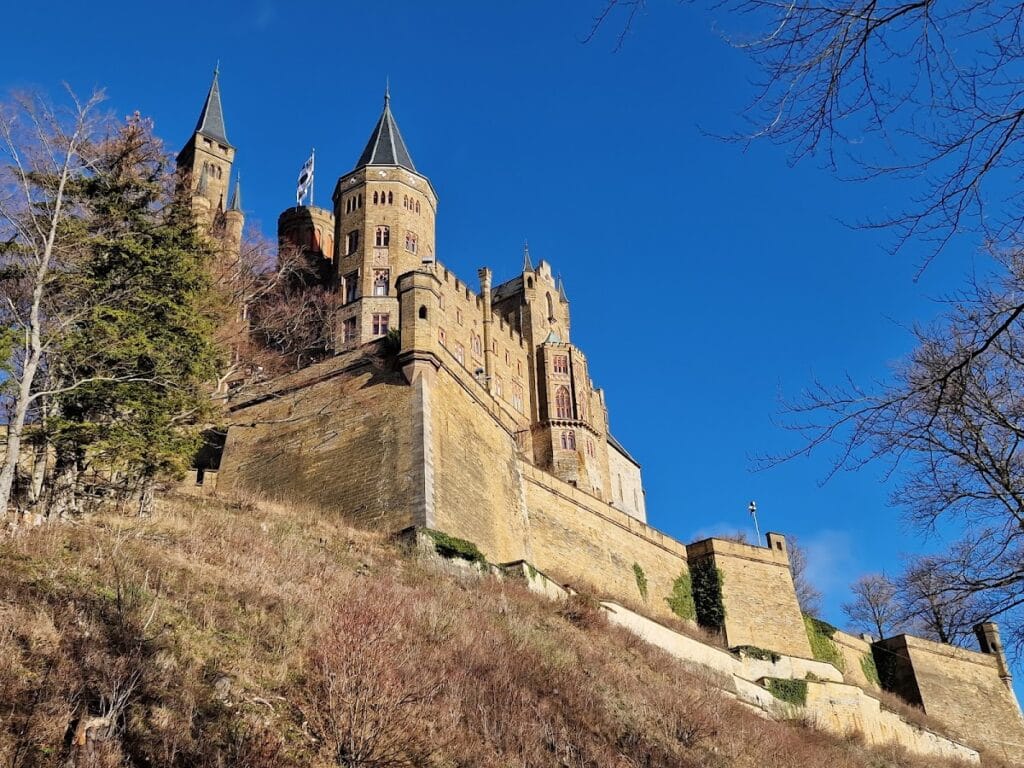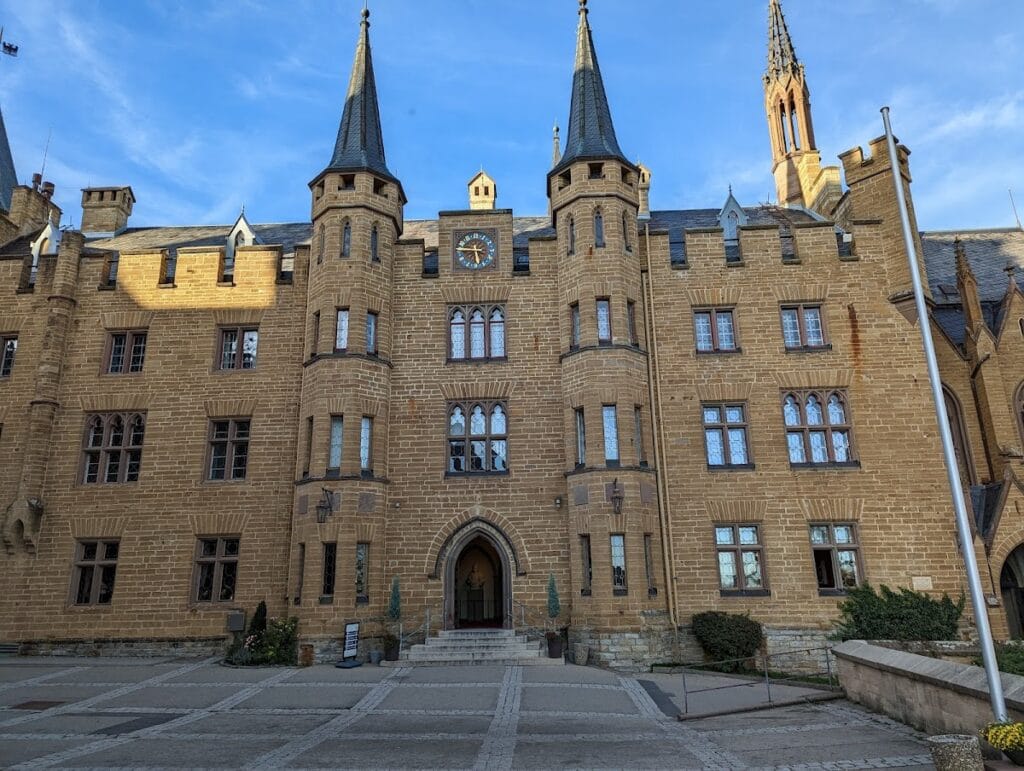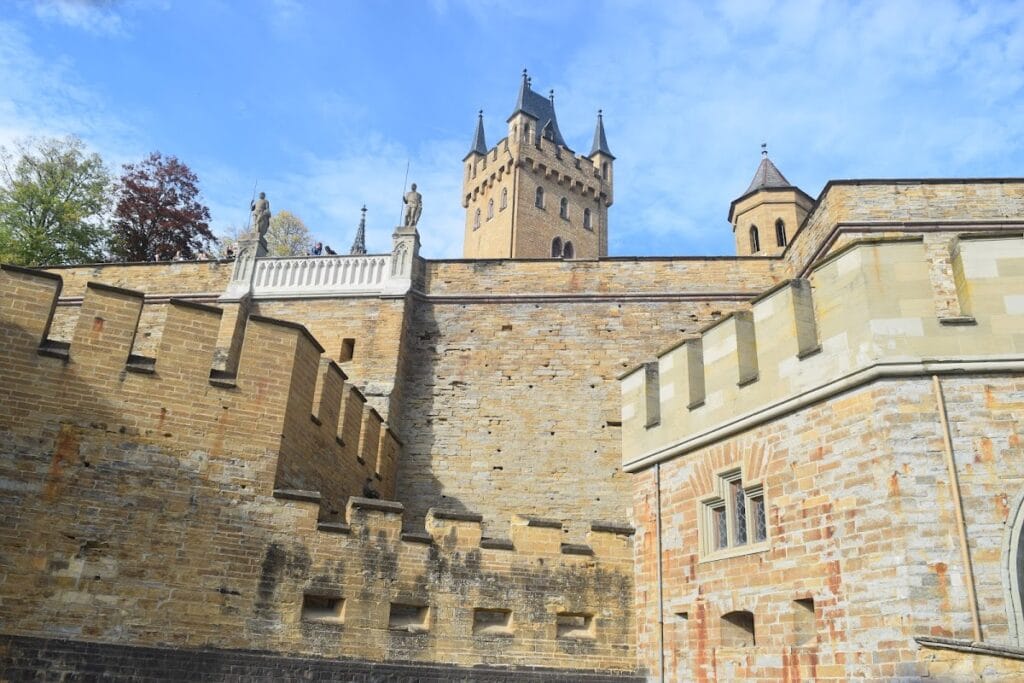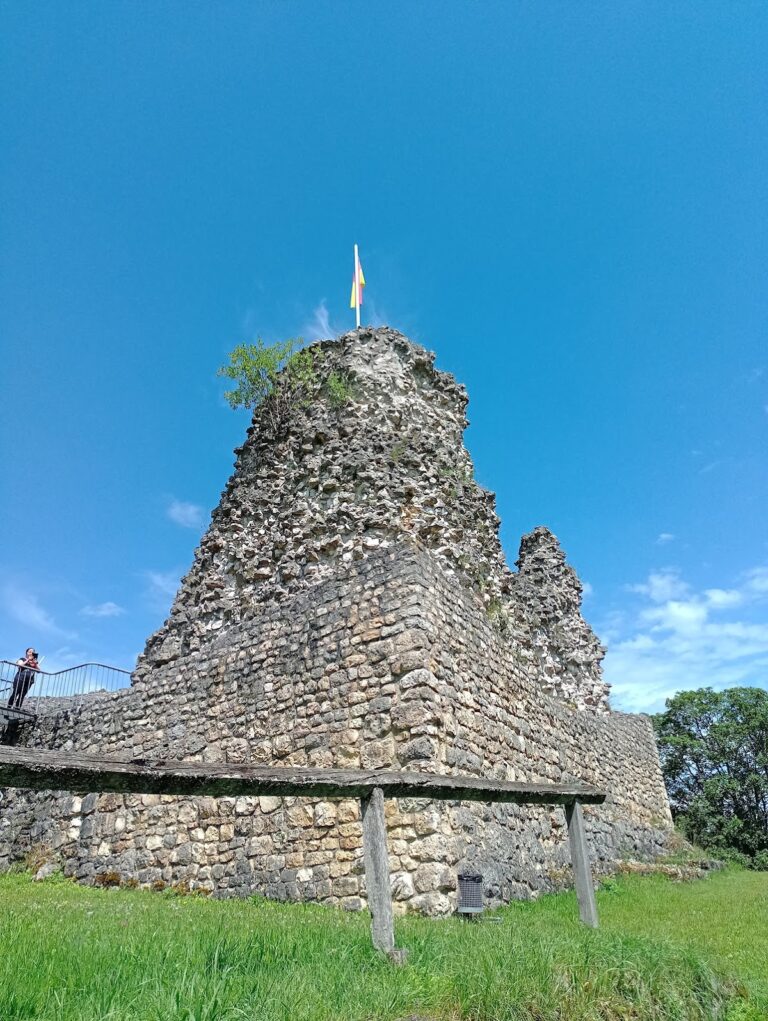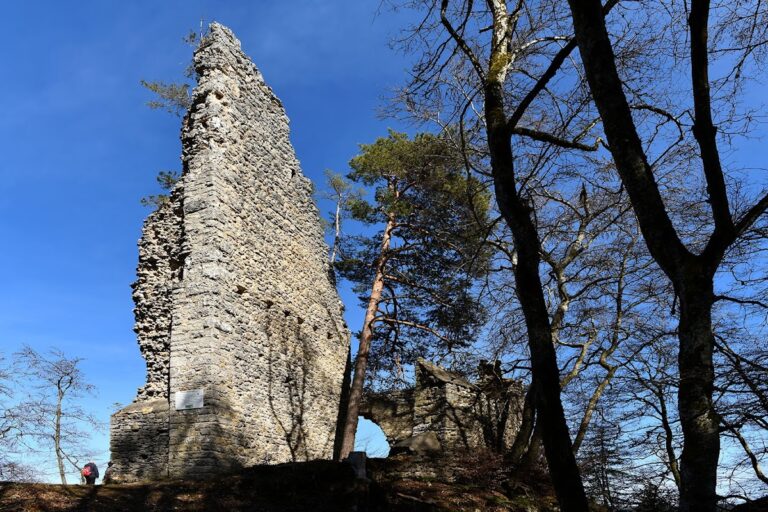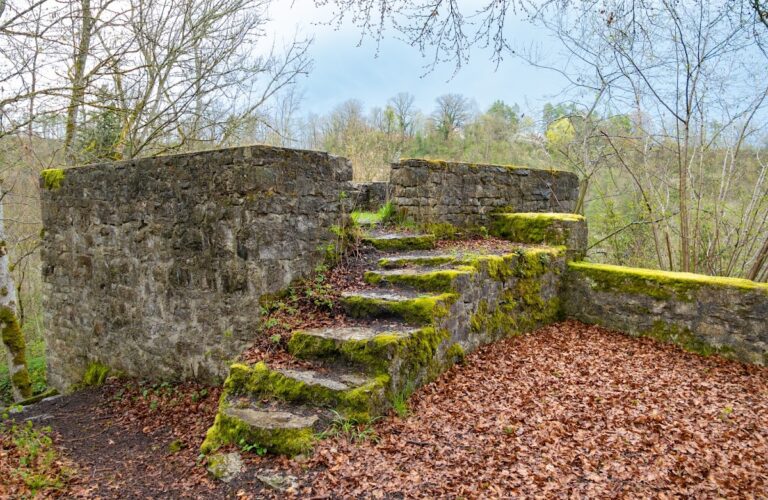Hohenzollern Castle: Historic Fortress and Dynastic Memorial in Germany
Visitor Information
Google Rating: 4.6
Popularity: High
Google Maps: View on Google Maps
Official Website: burg-hohenzollern.com
Country: Germany
Civilization: Unclassified
Remains: Military
History
Hohenzollern Castle is situated on Mount Hohenzollern within the municipality of Burg Hohenzollern in modern-day Germany. This prominent hilltop fortress was established by the medieval Germanic nobility known as the House of Hohenzollern, who gradually expanded their influence to rule Brandenburg, Prussia, and eventually the German Empire.
The initial castle’s construction likely dates back to the early 11th century, with the first written record appearing in 1267. Serving as the ancestral home of the Hohenzollern family, it stood as a medieval stronghold for the noble lineage during a time of frequent regional conflicts. In 1423, the original fortress faced a significant siege lasting nearly a year by the Swabian League, an alliance of imperial cities. This prolonged attack resulted in the castle’s destruction, prompted by disputes involving Count Friedrich XII of Zollern.
Following this event, a second castle was erected between 1454 and 1461. This structure was larger and fortified more robustly, designed to provide sanctuary for the Catholic branch of the Swabian Hohenzollerns. During the Thirty Years’ War in the early 17th century, the fortress functioned as a refuge but was overtaken by forces from Württemberg in 1634. Control later shifted to the Habsburg dynasty and, during the War of the Austrian Succession (1744–1745), the castle was occupied by French troops. Despite its strategic functions during these turbulent periods, by the late 18th century the castle’s military relevance declined, leaving it mostly in ruins with only St. Michael’s Chapel remaining usable by the early 1800s.
In the mid-19th century, from 1850 until 1867, a new castle was constructed on the site. Commissioned by King Frederick William IV of Prussia and designed by the architect Friedrich August Stüler, this third castle embraced Neo-Gothic architecture influenced by English Gothic Revival and the châteaux of France’s Loire Valley. Unlike its predecessors, the castle was conceived more as a dynastic memorial rather than a permanent royal residence. Although members of the Hohenzollern family, including Crown Prince Wilhelm after World War II, lived there briefly, it was never used regularly by the ruling monarchs.
Throughout the 20th century, the castle became home to important Prussian artifacts, such as the diamond-studded crown of Wilhelm II and personal belongings of Frederick the Great, including his uniform and snuffbox. It sustained notable damage from an earthquake in 1978, after which extensive restoration work continued into the following decade.
Today, the estate remains under the private ownership of the House of Hohenzollern, divided between its Brandenburg-Prussian and Swabian branches.
Remains
Hohenzollern Castle crowns an isolated summit reaching approximately 855 meters above sea level, occupying nearly the entire peak of Mount Hohenzollern. The castle complex is divided into four principal parts: the defensive walls and fortifications, the residential palace structures, various chapels, and the surrounding gardens. The design blends military functionality with palatial elegance, expressed in Neo-Gothic style.
Visitors enter the site through the Eagle Gate (Adlertor), which is equipped with a drawbridge spanning the approach. Beyond this gate, a winding outer enclosure called the zwinger forces visitors to turn four times, providing defensive security before accessing the bastions and the main upper gate. The zwinger’s angular path exemplifies medieval military engineering to slow attackers.
The castle’s palace builds upon the foundations of the second medieval fortress and is arranged in a U-shape opening to the southeast. Its three-story structures rise in intricate Neo-Gothic form, punctuated by numerous towers and ornamental pinnacles. Four main towers correspond to the primary bastions: the Emperor’s Tower faces the Fuchsloch bastion, the Bishop’s Tower aligns with Spitz bastion, the Margrave’s Tower overlooks Scharfeck bastion, and Michael’s Tower turns toward the garden bastion. Adjoining the residential quarters, the Watch Tower (Wartturm) serves as a staircase to the library and also supports a flagpole.
Inside, the Ancestry Hall features a painted family tree portraying the lineage of the House of Hohenzollern. The Count’s Hall (Grafensaal) spans the full southern wing and is notable for its rib vault ceiling, supported by eight red marble columns that stand freely, without attachment to walls. Stained-glass windows with muted grisaille (monochrome) designs by Stüler adorn the space. Directly beneath this hall lies the former kitchen area, now repurposed as a treasure chamber.
The castle’s library is decorated with murals created by Wilhelm Peters, depicting scenes from Hohenzollern history. The Margrave’s Tower houses the King’s parlor, also known as the Margrave’s room, as part of the residential arrangements.
Religious life at the castle is represented by three chapels belonging to different Christian denominations. The Catholic St. Michael’s Chapel partly dates from the second castle’s original construction between 1454 and 1461 and is the only surviving element from that earlier period. Its architectural features include net rib vaults—an intricate stone ceiling pattern—and stained-glass windows sourced from the former monastery church at Stetten, dating around 1280 to 1290. The Protestant Christus Chapel, designed by Stüler during the 19th century rebuild, draws inspiration from the medieval Naumburg Cathedral. A third chapel, the Russian Orthodox Resurrection Chapel, was established later during the 20th century.
The castle garden was originally planned by the renowned landscape architect Peter Joseph Lenné. While the historic planting scheme no longer exists as initially designed, the garden area surrounds the palace and connects to the natural landscape of the hilltop.
Constructed primarily with Malm limestone, a local stone variety, the castle retains statuary of Prussian kings relocated from Berlin’s former Ruhmeshalle. These statues stand between the bastions as part of the castle’s decoration.
The treasure chamber preserves significant artifacts of Prussian history. Among them are Frederick the Great’s military uniform, distinguished by a bullet hole, his personal snuffbox, his crutches, and musical flutes. The collection also includes the remarkable crown worn by Wilhelm II, adorned with diamonds.
Within the grounds, amenities such as a café-restaurant and an outdoor summer dining area exist. The dining terrace offers seating for 150 guests beneath royal linden trees in the garden, blending historic environment with hospitality.
